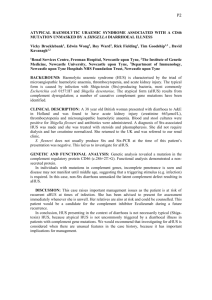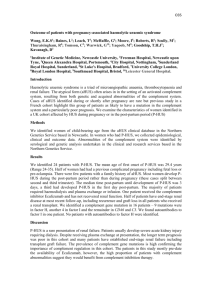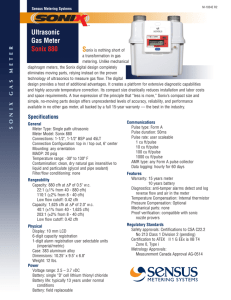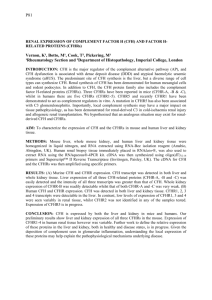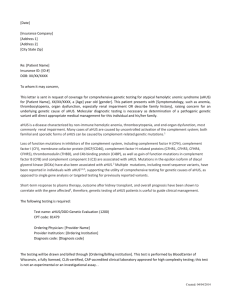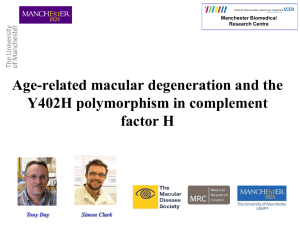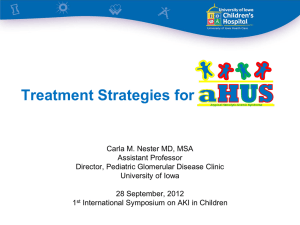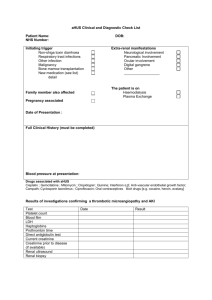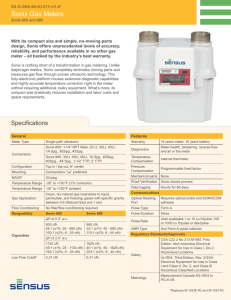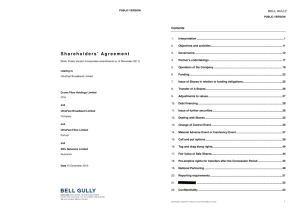Atypical Haemolytic Uraemic Syndrome associated with a novel
advertisement
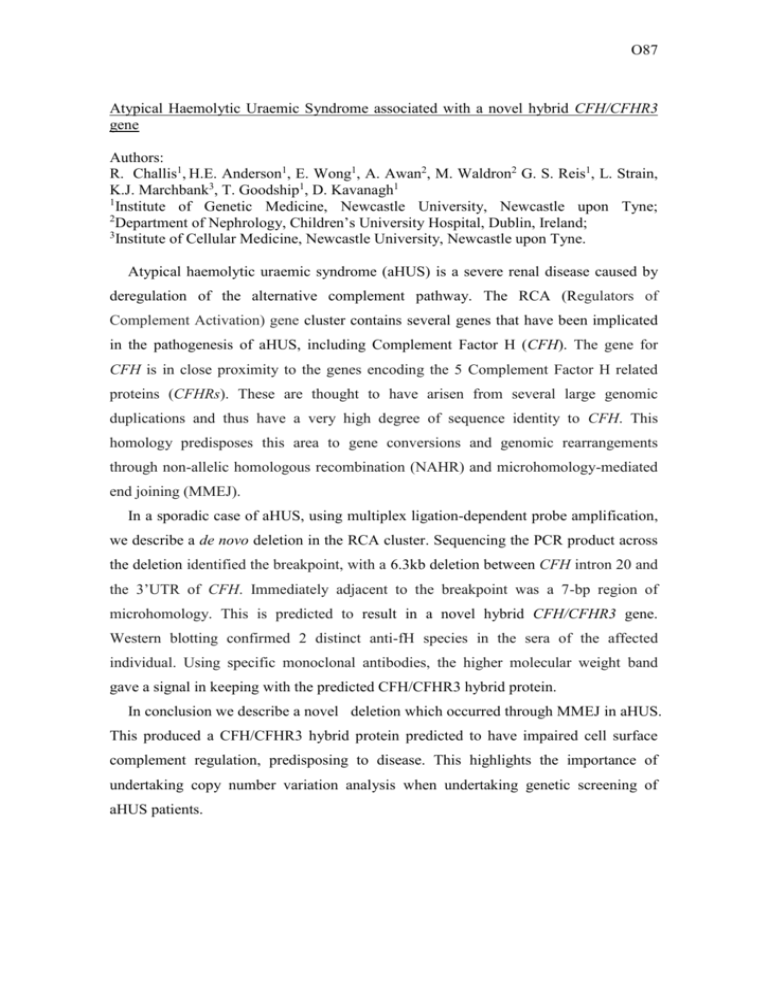
O87 Atypical Haemolytic Uraemic Syndrome associated with a novel hybrid CFH/CFHR3 gene Authors: R. Challis1, H.E. Anderson1, E. Wong1, A. Awan2, M. Waldron2 G. S. Reis1, L. Strain, K.J. Marchbank3, T. Goodship1, D. Kavanagh1 1 Institute of Genetic Medicine, Newcastle University, Newcastle upon Tyne; 2 Department of Nephrology, Children’s University Hospital, Dublin, Ireland; 3 Institute of Cellular Medicine, Newcastle University, Newcastle upon Tyne. Atypical haemolytic uraemic syndrome (aHUS) is a severe renal disease caused by deregulation of the alternative complement pathway. The RCA (Regulators of Complement Activation) gene cluster contains several genes that have been implicated in the pathogenesis of aHUS, including Complement Factor H (CFH). The gene for CFH is in close proximity to the genes encoding the 5 Complement Factor H related proteins (CFHRs). These are thought to have arisen from several large genomic duplications and thus have a very high degree of sequence identity to CFH. This homology predisposes this area to gene conversions and genomic rearrangements through non-allelic homologous recombination (NAHR) and microhomology-mediated end joining (MMEJ). In a sporadic case of aHUS, using multiplex ligation-dependent probe amplification, we describe a de novo deletion in the RCA cluster. Sequencing the PCR product across the deletion identified the breakpoint, with a 6.3kb deletion between CFH intron 20 and the 3’UTR of CFH. Immediately adjacent to the breakpoint was a 7-bp region of microhomology. This is predicted to result in a novel hybrid CFH/CFHR3 gene. Western blotting confirmed 2 distinct anti-fH species in the sera of the affected individual. Using specific monoclonal antibodies, the higher molecular weight band gave a signal in keeping with the predicted CFH/CFHR3 hybrid protein. In conclusion we describe a novel deletion which occurred through MMEJ in aHUS. This produced a CFH/CFHR3 hybrid protein predicted to have impaired cell surface complement regulation, predisposing to disease. This highlights the importance of undertaking copy number variation analysis when undertaking genetic screening of aHUS patients.
